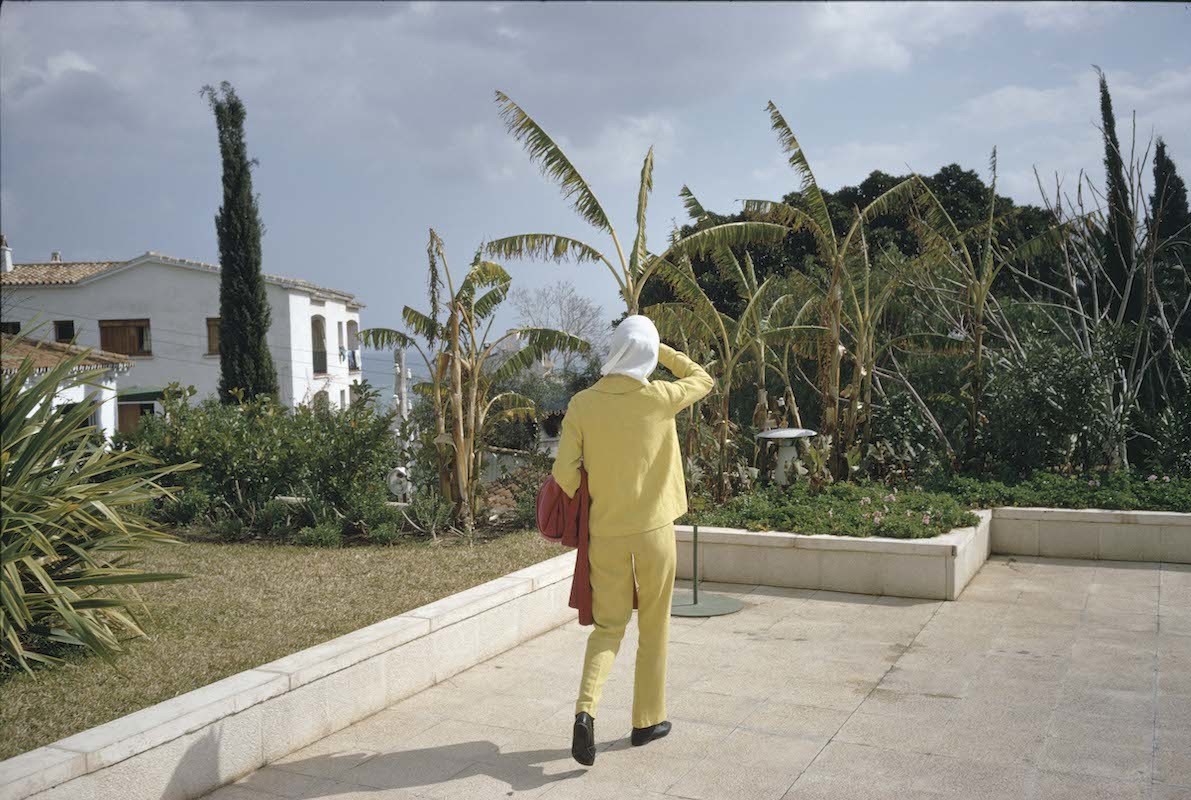I’ve had an affinity for Madrid since I first landed there two years ago. It’s truly a stunning city; full of energy, culture, art, great food, and of course, wine. Madrid was my introduction to Spain, where I now live. I had no plans to live in this country when I arrived for an artist’s residency in May 2017, but immediately had an uncanny sense of belonging upon arriving. I fell in love with life here and soon found myself making huge changes so that I could move to Granada, Spain indefinitely. PHotoEspaña brought me back to Madrid and it was a treat to revisit where my life in Spain first began. Madrid felt both new and familiar, as memories mixed with new experiences at the festival. Throughout the festival these themes of dejá vú, the uncanny, duality, and repetition kept re-emerging.
The most notable example of this is Susan Bright’s curatorial project Dejá Vú, which consists of five exhibitions in three different locations: The Discrete Channel with Noise by Clare Strand, Playground by Elina Brotherus, The Other Chapter by Délio Jasse, all housed at the Fernán Gómez Cultural de la Villa; Photography and Air by Patrick Pound showing at the Museo Lazaro Galdiano; and Double Take by Sharon Core and Laura Letinsky, located at the Museo de Romanticismo.
Dejá Vú, Curated by Susan Bright
I visited the three exhibited at the Fernán Gómez Cultural de la Villa. Brotherus, Strand, and Jasse’s shows worked together beautifully in this space.
Upon descending the stairs we entered Elina Brotherus’ show Playground. The large-scale photographs presented on colorful walls imparted an immediate sense of amusement.
Playground features photos and video inspired by ‘Event Scores’ from the Fluxus movement. The Fluxus movement was a loosely organized group of artists spanning the globe with the goal of destroying the boundary between life and art. Similar to Dadaism, they often used humor to take power away from the artistic elitism that is upheld by museums. They believe one doesn’t need an education in art in order to create or appreciate it. Within the Fluxus tradition, Event Scores are short written instructions, which could be followed by any person in order to create an artistic act.


Using a variety of Event Scores from different Fluxus artists, Brotherus created images and video of these instructions being followed. For example, in her piece Flux Harpsichord Concert you see an image of a wiener dog on a piano, as Brotherus follows the Event Score of George Makiunas: 12 compositions for piano – for Nam June Paik, Composition no.5: Place a dog or a cat (or both) inside a piano and play Chopin, 1962. Brotherus’ reimagining of this art movement from the 1960s is done in a contemporary manner, bringing together familiar concepts with a present-day spark. I’ve always been a fan of the Fluxus movement and its use of absurdity to raise big questions about what art is, what art can be, and who can be an artist. Playground continues this tradition by questioning authorship and repetition through a wide variety of humorous, beautiful, absurd, and touching images.
Next, Délio Jasse’s show The Other Chapter begins with a box of slides he found at a flea market in Lisbon. He blew up the images and altered them, concealing their identities by silkscreening information from official documents on them. The show follows the journey of two Portuguese families living in Mozambique and Angola in colonial Africa. He displays the domestic lives of these families and how they appear to recreate their lives in Europe, erasing African culture from their daily lives within these colonized African countries. The Other Chapter discusses personal experience, memory, and identity within a grander political discourse.
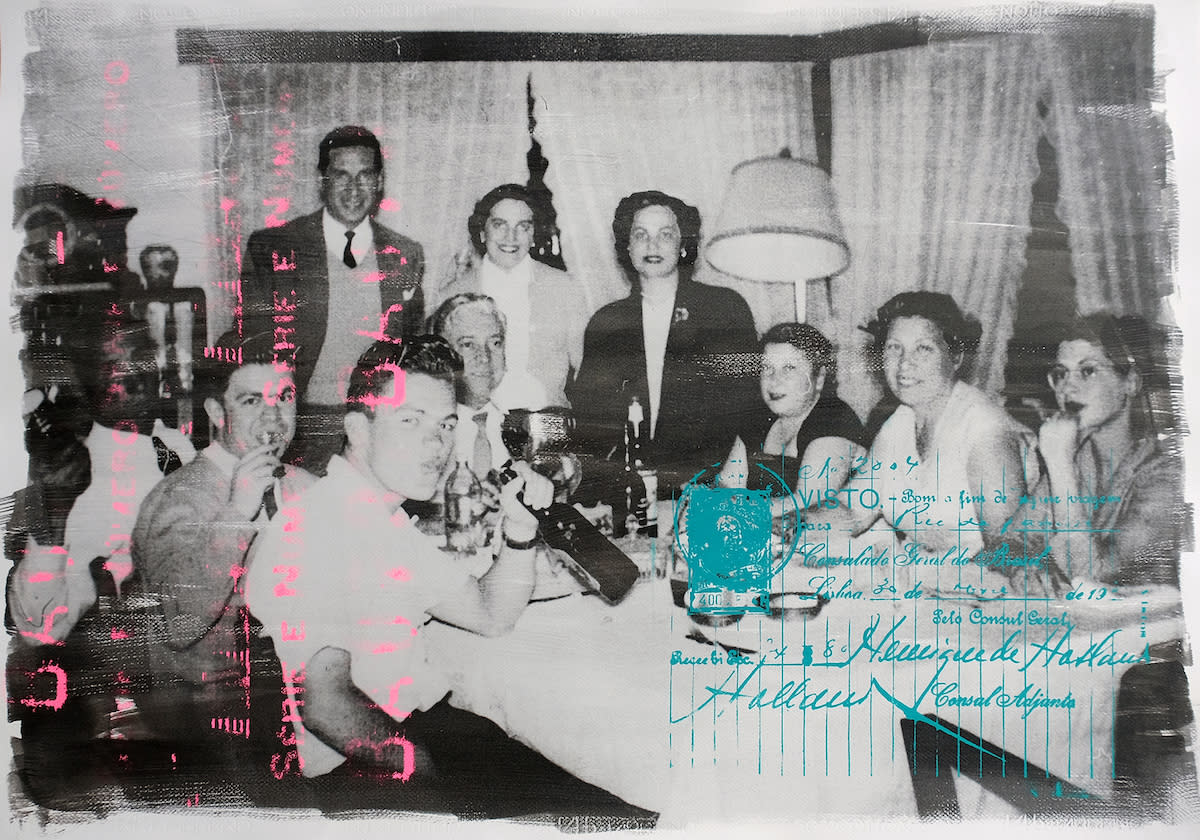
Clare Strand’s The Discrete Channel with Noise examines communication, specifically what happens when we misinterpret or reinterpret messages we’re given. In a show that features photography, painting, projections, graphics, and objects, she beautifully illustrates the act of communication, flaws and all.
This project was executed while Strand was away at an artist’s residency, with the help of her husband Gordon MacDonald, even though they were physically apart. Photographs were selected, and a grid was drawn on each of them. The gray squares within the grid were then assigned a number from one to nine (one being white, nine being black, and numbers between being corresponding shades of gray). Strand then recreated the grid on canvas. Her husband read out the numbers to Strand over the phone from their home, while she filled in the squares on the canvas with the shade of gray dictated by the number.
Through the grayscale language, translated by numbers and squares and communicated by phone, a reproduction of the photograph was then created on the canvas with gray paint. It’s a poetic illustration of the difference between the two realities of what we try to communicate and what actually is communicated. There is always a breakdown, a shape-shift that occurs when an idea leaves one person’s mind and enters another’s. The splitting or a doubling that occurs that is unavoidable.
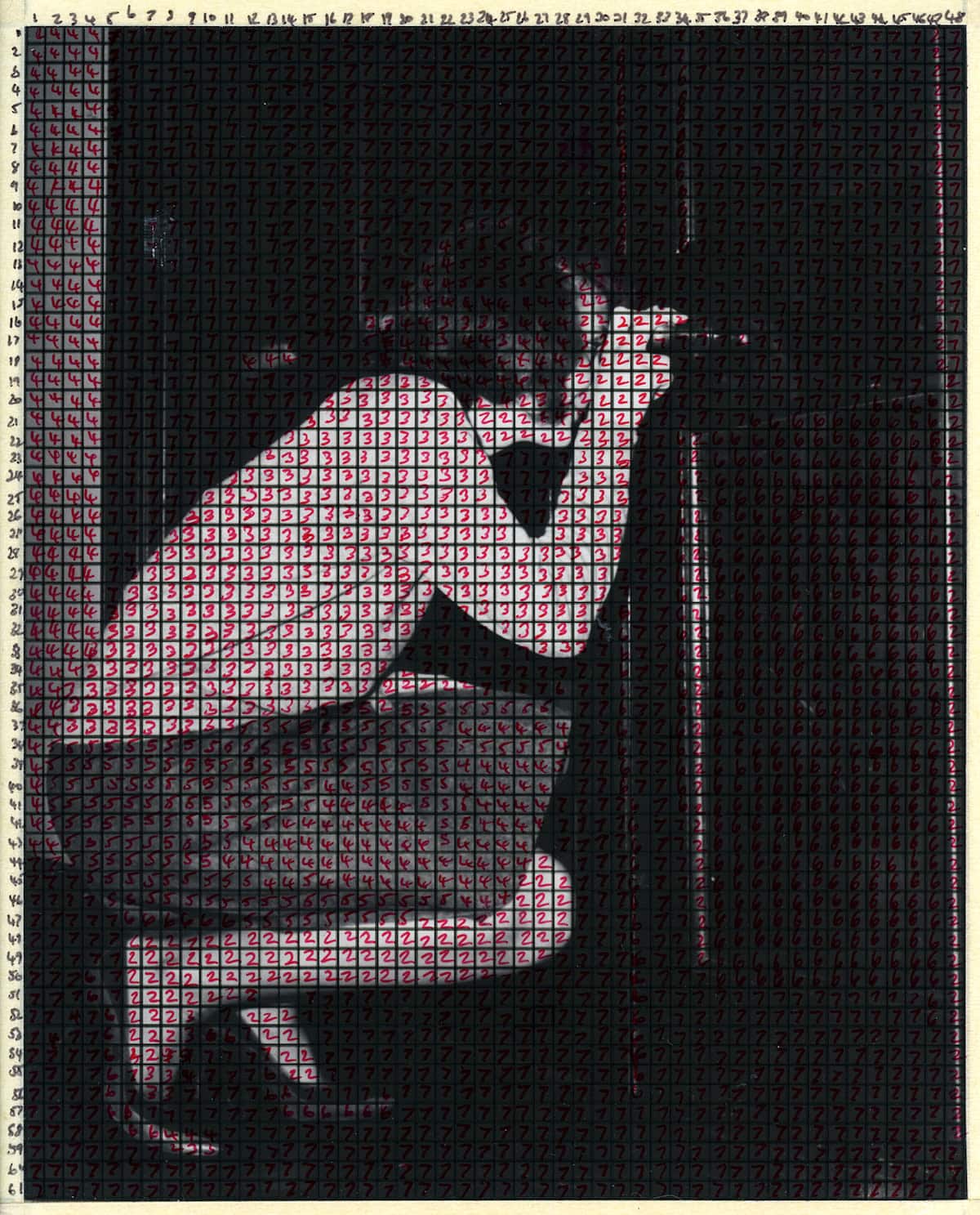
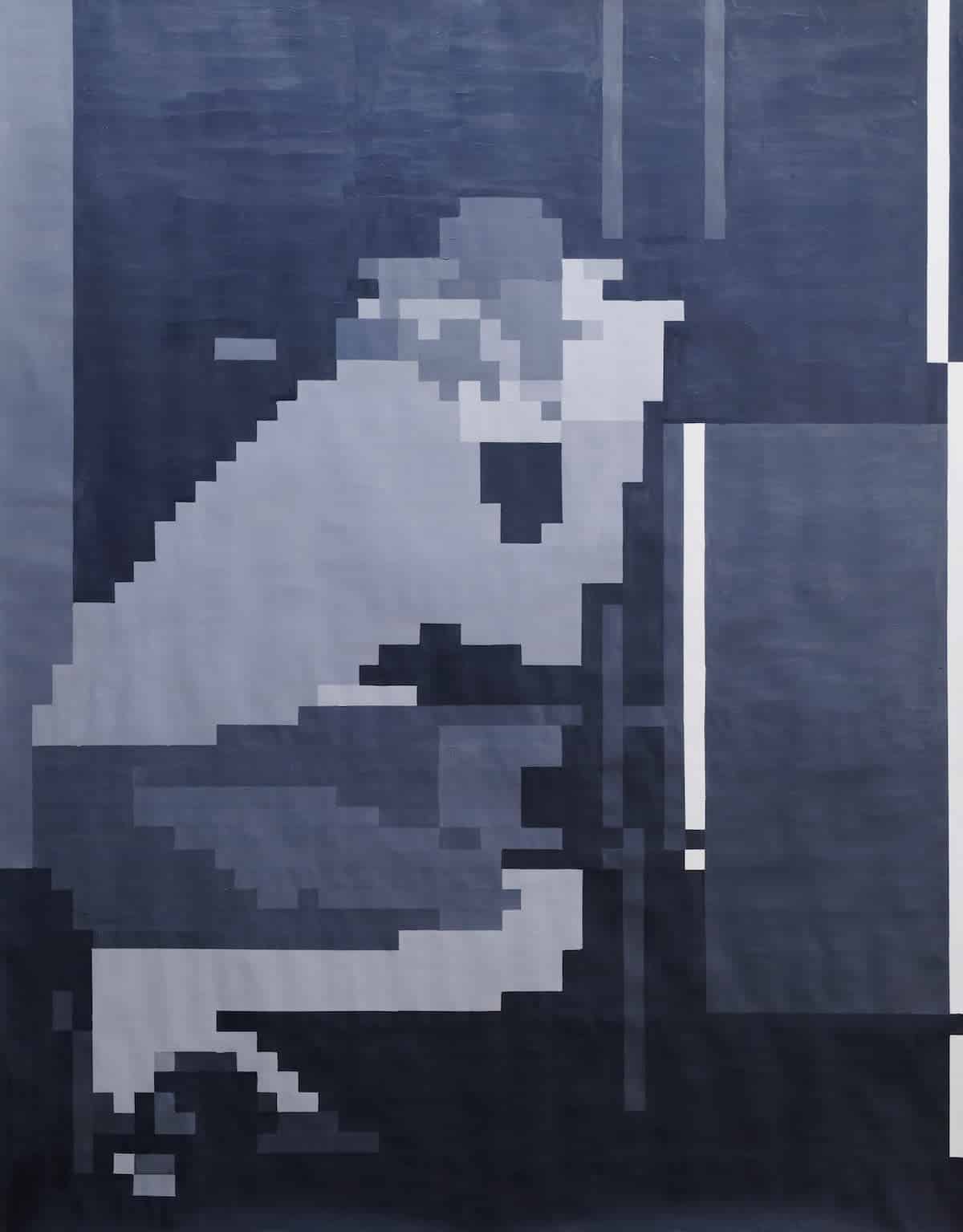
As someone who learned Spanish after moving to Spain, I relate quite personally to this show. We create systems of languages with the best of intentions and try to communicate with each other in so many different ways. Whether using words, gestures, drawings, or Google translate, what is said is never exactly the same as what is heard. Strand encapsulates this truth: the undeniable difference between the message sent (the original photograph) and message received (the painting). There are always flaws, failures, and frustrations, but there’s something brave and beautiful about the act of doing our best to connect with each other and share our experiences.
Casa de America, Joel Meyerowitz, Out of Darkness and Diana Markosian, Over the Rainbow
Walking through the lovely garden entrance of Casa de America, and up the first flight of stairs we were brought to Joel Meyerowitz’s two-room show. Out of Darkness is a moving glimpse into southern Spain in the later years of Franco’s dictatorship. These images were taken in Málaga—about 1.5 hours from where I live now in Granada—in the late 1960s. Given that Spain was under a dictatorship until the death of Franco in 1975, this history still hits close to home for those who live here. Meyerowitz’s photos demonstrate the change taking place in Spain in the 1960s. Although still under Franco’s rule, the country’s borders were opening up and the influx of tourism from Northern Europe and North America meant Spain could begin to broaden its cultural horizons.
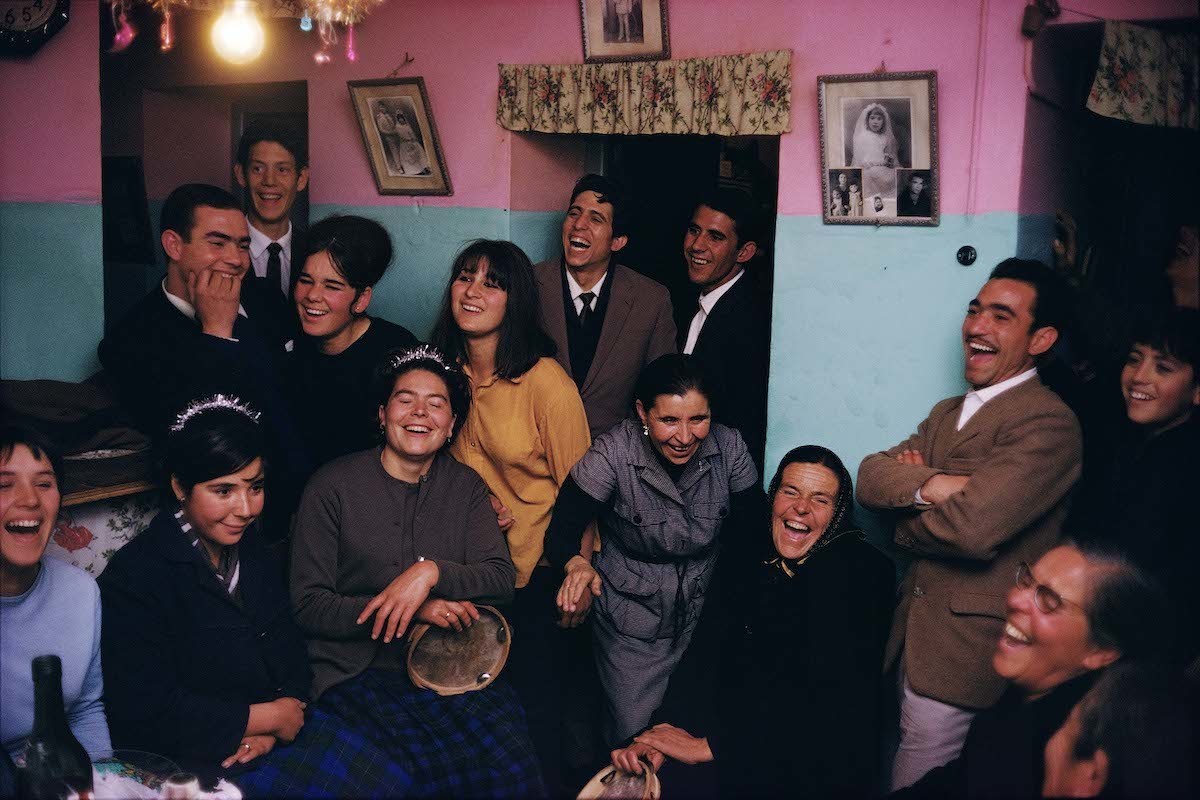
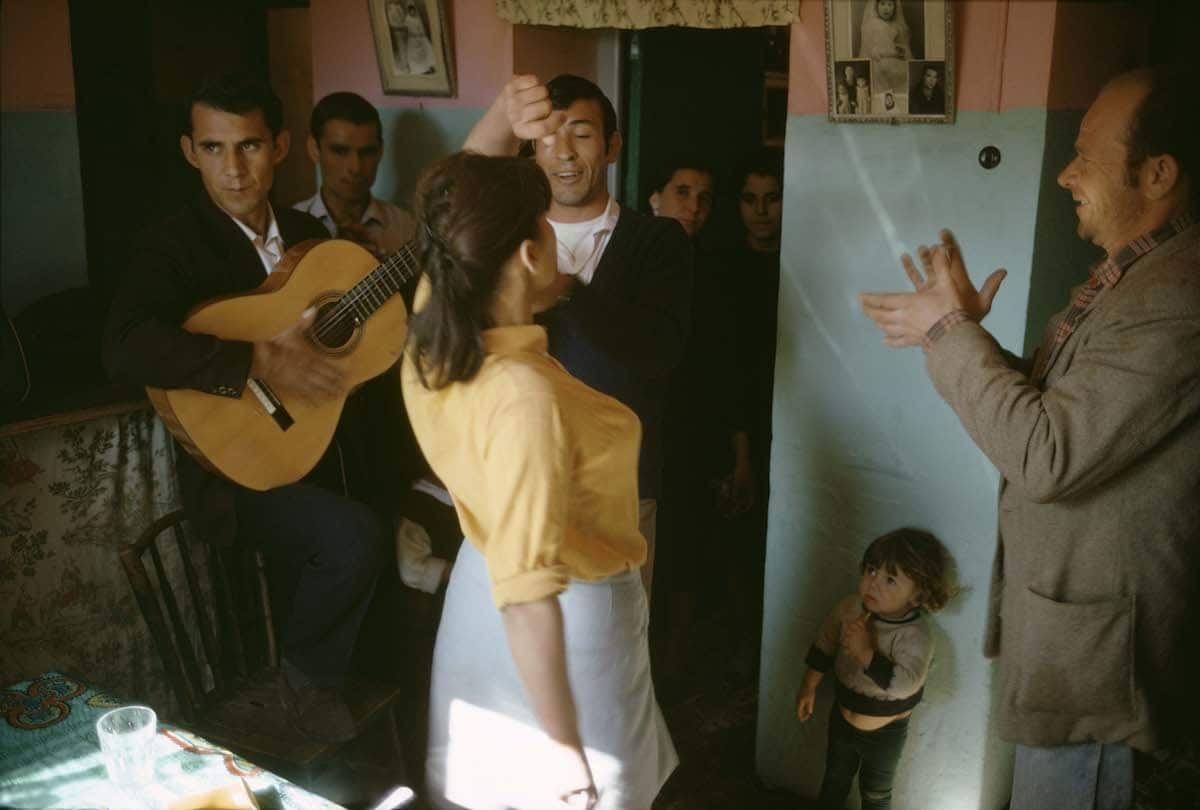
The familiarity of the landscape and people of Andalusia was almost eerie to me. Fifty years later and I could easily recognize these people and places from where I live now in 2019. The political changes that have occurred in this region in that time couldn’t be greater, however, the essence of the life here remains the same. Deeply affected by generations of civil war and dictatorship, these photos bear witness to the light that insists on shining even through the darkest of histories—both through the quality of light in the photos and the light that exudes from its subjects.
Up another flight of stairs, we found Diana Markosian’s show Over the Rainbow. Over the Rainbow beautifully documents quinceañeras in Cuba. These ostentatious parties celebrate girls becoming women on their 15th birthday. Even in communist Cuba, the show of wealth at these parties is incredibly important. Photographers are hired and elaborate photoshoots are organized, documenting this special day for the rest of the subjects’ lives. These images offer a view into a realized fantasy for these girls, a second look that brings to light their inner lives and dreams. For one day these girls get to be another version of themselves, a vision of wealth and hyper-femininity. Markosian’s photos capture a fierce beauty, surrounded by festivity and community, and exploding with light and color. Markosian created this project under the Elliot Erwitt Havana 7 Fellowship, a fellowship offered to photographers to create a unique body of work that captures the soul of Cuba.
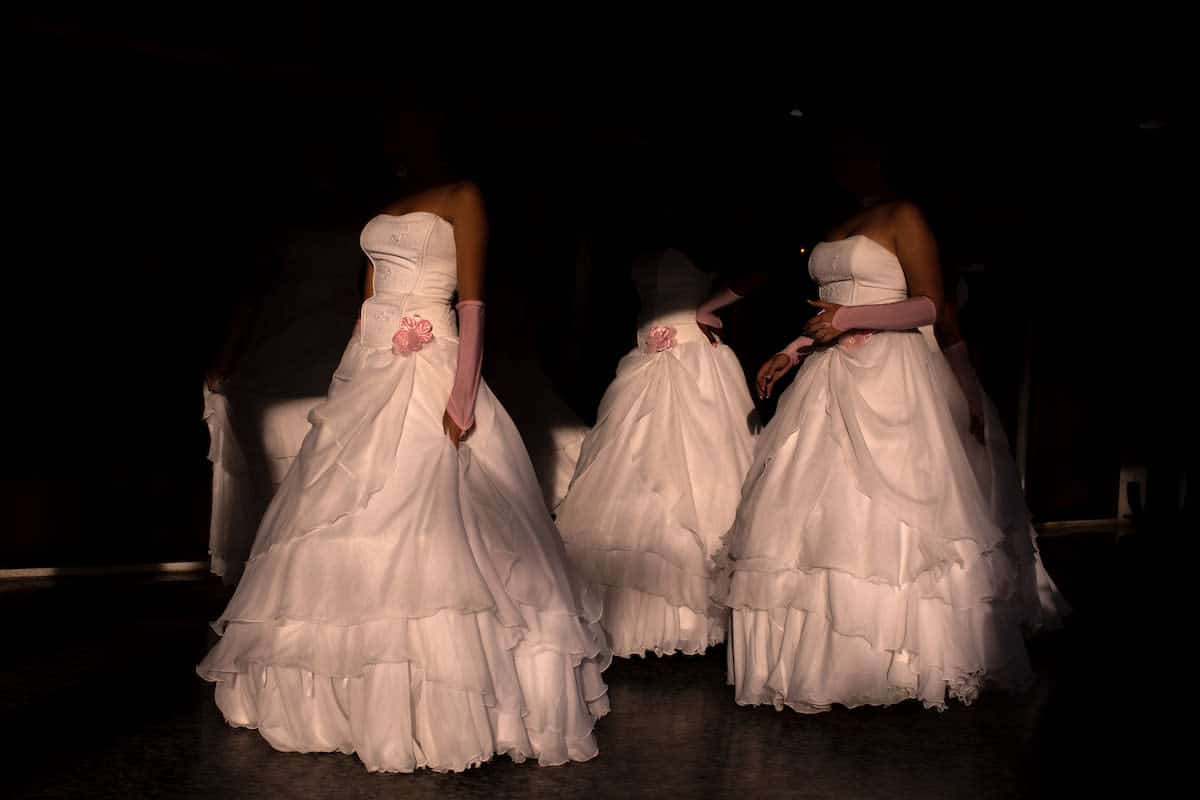
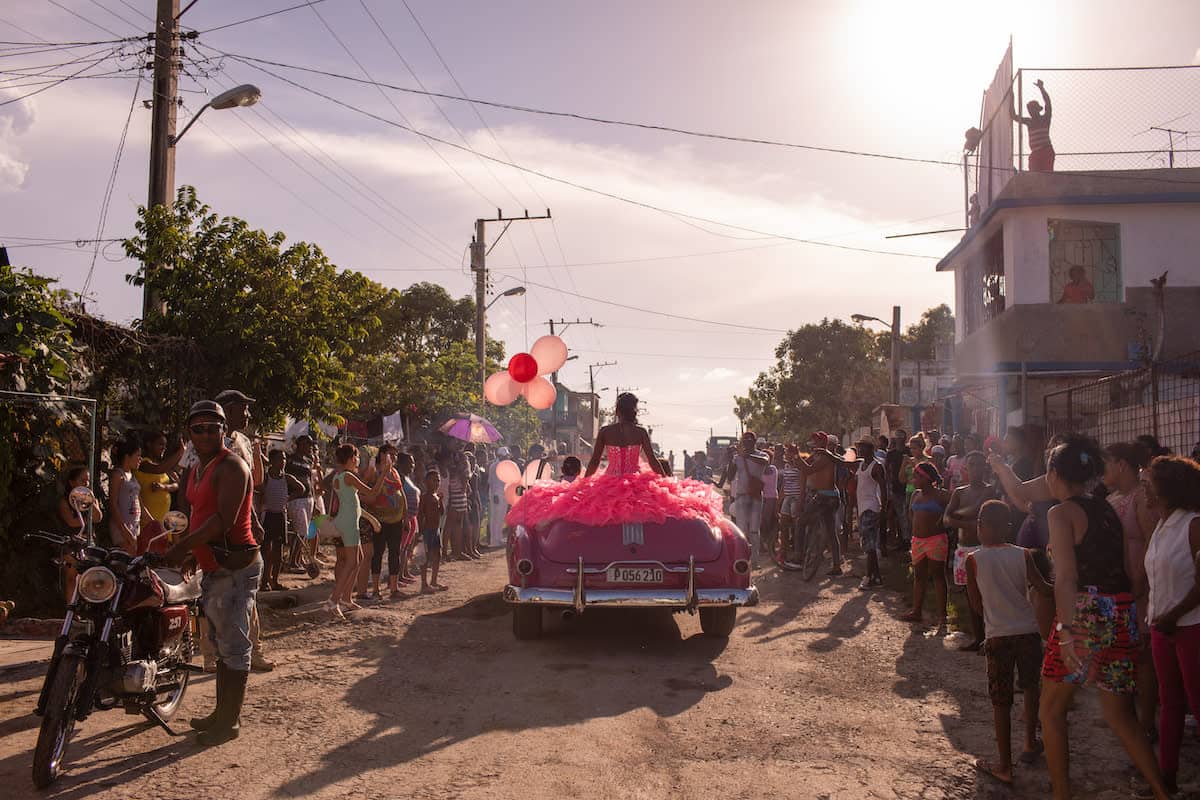
Fundacion MAPFRE, Berenice Abbott, Portraits of Modernity
Greeted by curator Estrella de Diego, we entered the MAPFRE Center and ascended to the top floor to see Berenice Abbott’s show Portraits of Modernity. It opens with a distorted and surreal self-portrait from 1930—the only image in the show that obviously demonstrates her learning from Man Ray. Abbott worked as Man Ray’s assistant and learned a great deal from the avant-garde artist and leading figure of the Surrealist movement. Maintaining the impeccable printing techniques she learned from her mentor, the rest of the show demonstrates her break away from surrealist tendencies and approach a more documentary style in her work. She captures the queer scene in New York and Paris of the 1920s and 1930s with portraits of icons like Janet Flanner. Her subjects are mostly members of the New Women: a group of independent women seeking radical change in gender politics—Abbott was also a member. These portraits display the strength and character of these women, often in traditionally masculine attire and poses.

Following the series of portraits is a collection of her work photographing architecture in New York. She captured the excitement of modernity through the iconic bridges and skyscrapers as they were new or just being built. Abbott brings to life the grandeur and bravado so characteristic of New York City, often from dramatic perspectives that certainly would have been perilous to shoot. Juxtaposed with these almost celebratory images are photographs documenting the other reality of New York—that of homelessness and people displaced by the fast capitalistic growth of the city. She doesn’t shy away from showing the truth of the city: highs and lows, wealth and poverty. This duality of New York is more visible now than ever, with the direness of poverty rubbing shoulders with the highest peaks of wealth. To revisit the work of this brilliant woman is to see that she was ahead of her time recognizing the contradictory truths of New York (and North America) and that very little has changed.

Círculo de Bella Artes de Madrid, Donna Ferrato, Holy (winner of the PhotoEspana 2019 award)
The Círculo de Bella Artes has a gorgeous, winding staircase as soon as you enter the building. At the bottom of that staircase, we encountered the most affecting show of the festival, Donna Ferrato’s Holy. She has been documenting women who have been oppressed by men over the last 40 years, from domestic abuse survivors to women marching for their freedom in New York and Madrid. Bringing angry tears to my eyes, Ferrato’s work drove home the point that we need to unify and act now. She has been capturing the strength and perseverance of women under some of the worst circumstances for decades, and it’s obvious that she is absolutely livid at the lack of change over the years. In a discussion about the show, she was full of ire and demanded action. She balked at how commonly men react defensively to her images, and how white women are often inactive in fighting the patriarchy because they don’t receive the worst of its oppression.
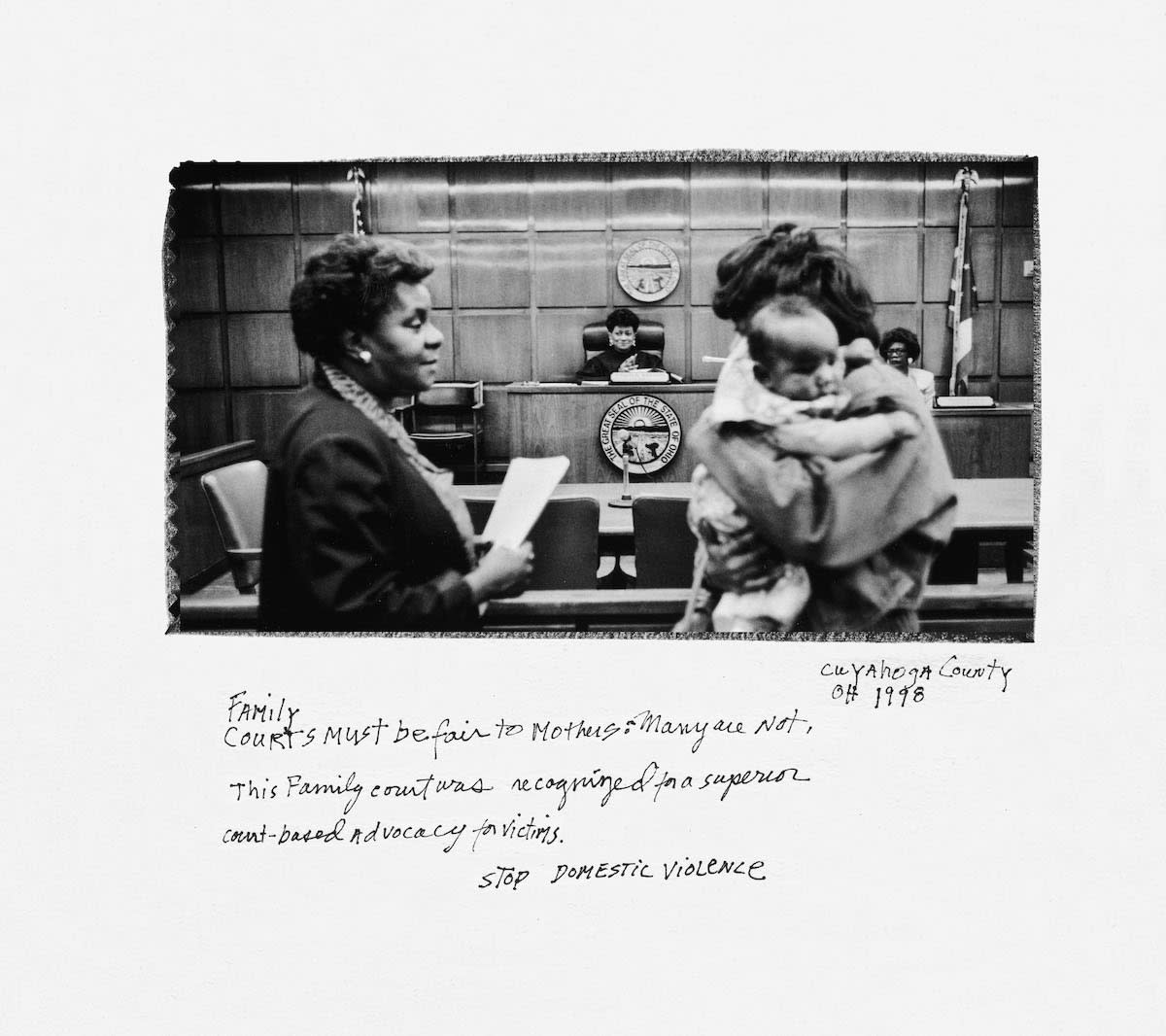
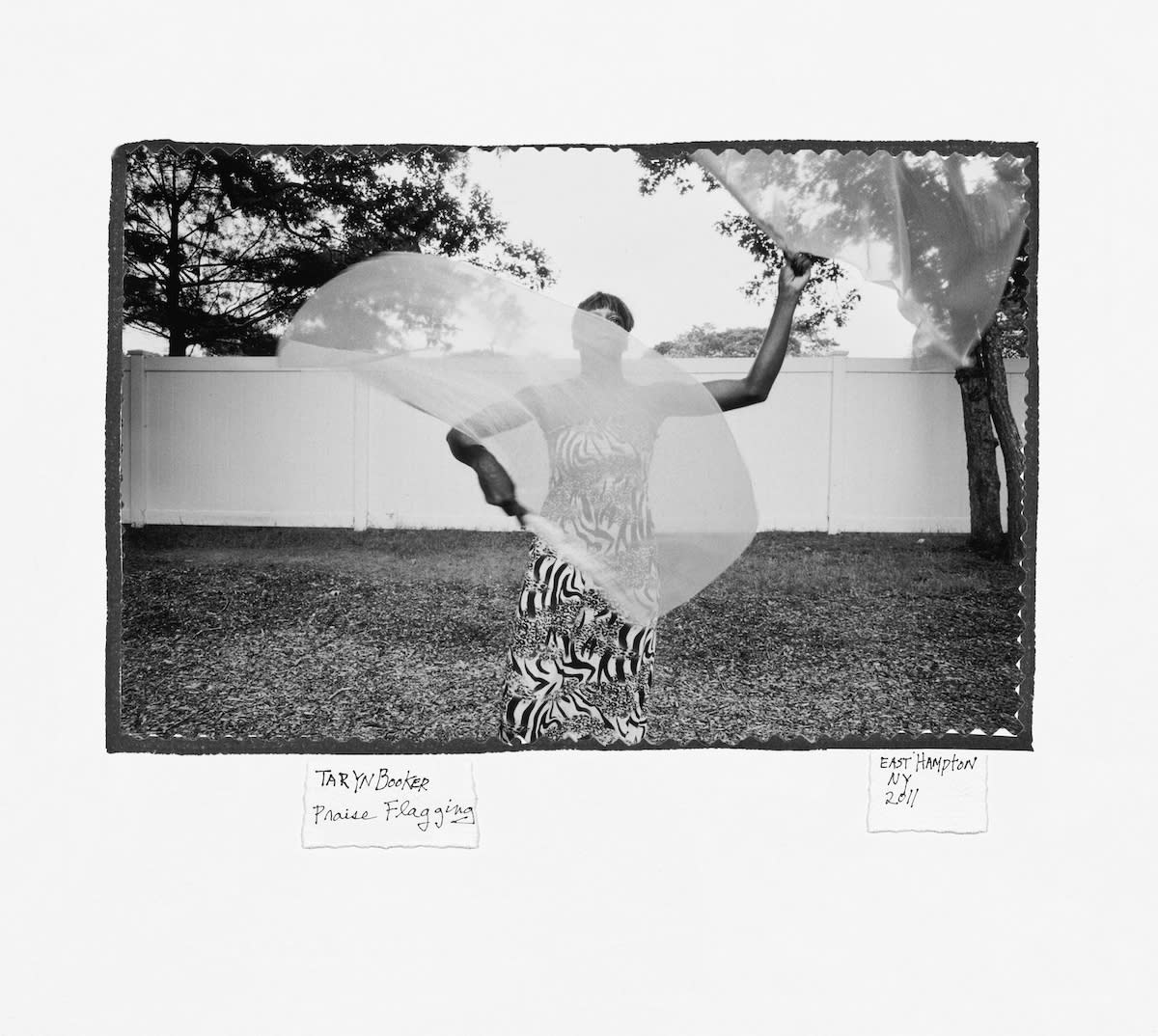
There’s no questioning the point she is making: we see it every day in our society, and we keep seeing the same thing over and over and over. Ferrato is frustrated by this repetition, and that her images from 40 years ago look so similar to those from today. The abuse continues, and conversations with her subjects today offer her a very upsetting sense of dejá vú, recalling conversations from decades ago. The photographs are poignant, and when seen together, the narrative of so many years of the same problems reoccurring is clear and demands that we act now.
Want more art and photography?
Exploring the Transformative Power of Design at the Madrid Design Festival
6 Artists Who Stole the Show at Independent Art Fair
5 Galleries Shaping Barcelona’s New Contemporary Identity
